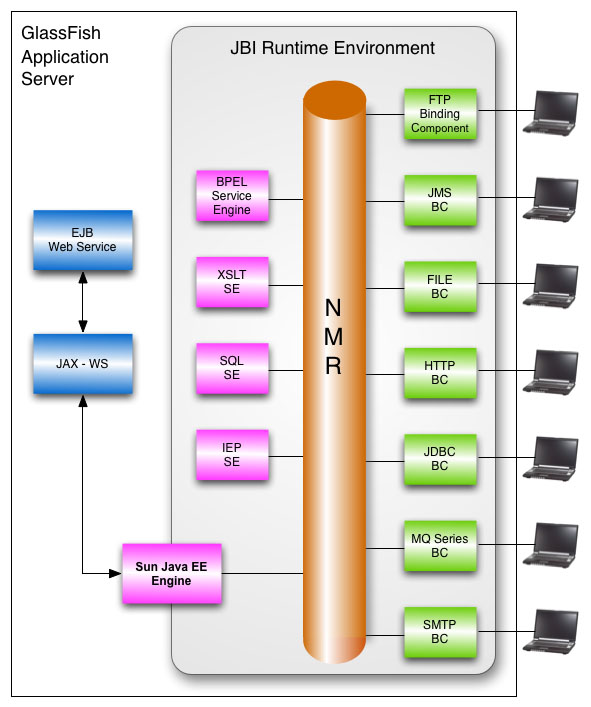| Skip Navigation Links | |
| Exit Print View | |

|
Oracle Java CAPS Java EE Service Engine User's Guide Java CAPS Documentation |
| Skip Navigation Links | |
| Exit Print View | |

|
Oracle Java CAPS Java EE Service Engine User's Guide Java CAPS Documentation |
Using the Java EE Service Engine in a Project
Java EE Service Engine Features
Java EE Service Engine Limitations
Java EE Service Engine Use Case Scenarios
Java EE Service Engine as Service Provider and Service Consumer
Java EE Service Engine as a Service Provider
Java EE Service Engine as a Service Consumer
Java EE Service Engine Example Scenario
Configuring and Starting the Java EE Service Engine
To Start the Java EE Service Engine from the NetBeans IDE
To Start the Java EE Service Engine from the Admin Console
To Start the Java EE Service Engine Using Command Line Interface
Installing Java EE Service Engine Using Command Line Interface
Other Operations Using the Command Line Interface
Administering the Java EE Service Engine
To View the General Properties
Java EE Service Engine Log Management
The Java EE Service Engine is a JSR 208-compliant JBI runtime component that connects Java EE web services to JBI components. The framework of the Java EE Service Engine is defined by the inter-connectivity of GlassFish and the JBI runtime environment, which is installed as part of the application server. The Java EE Service Engine acts as a bridge between the application server and the JBI runtime environment, facilitating interaction between Java EE and JBI components.
Without the Java EE Service Engine, a Java EE component that is deployed as a servlet or Enterprise Java Beans web service can only be accessed from the HTTP SOAP transport. With the application server and JBI runtime environment working together, Java EE components can more readily access an array of binding components for transport or service engines for business logic, processing, transformation, and routing services. Enterprise beans and servlets that are packaged as web services and deployed on the application server are transparently exposed as service providers in JBI environment. Therefore the Java EE components can consume services exposed in JBI environment using the Java EE Service Engine without being aware of the underlying binding or protocol. This in-process communication between components of the application server and JBI runtime components results in increased request processing speed because all component interactions occur within the application server.
The following illustration shows the relationship between the application server, the JBI runtime environment, and the Java EE Service Engine. Acting as either a service provider or as a service consumer, the Java EE Service Engine communicates directly with the Normalized Message Router (NMR) and EJB web services using JAX-WS. The power and versatility of the Java EE web service communication continues to expand when additional JBI components are added to the runtime environment.
